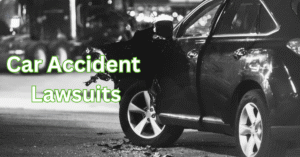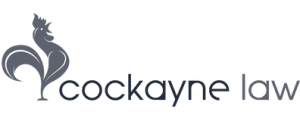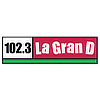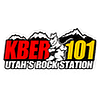Car Accident Lawsuits in Utah: Steps, Timeline, and What to Expect

If you were hurt in a crash, you may be wondering what happens after the insurance claim. This guide explains the Utah car accident lawsuit process in plain English. You will see how to file, how long it can take, what the settlement path looks like, and when cases go to trial.
We also point out the Utah rules that can change results, like no-fault PIP, the four-year filing deadline for injuries, and the 50% fault bar. When in doubt, speak with a trusted local professional. Most people seek the help of a car accident lawyer near me to get answers quickly.
Key Points You Should Know
- Meet Utah’s PIP threshold before suing.
- File injury lawsuits within four years.
- Wrongful death cases have two years.
- You must be under 50% at fault.
- Mediation is often required before trial.
- Keep strong evidence from day one.
- Small claims is an option under $20,000.
- Government claims can have shorter limits.
How to File a Car Accident Lawsuit in Utah
Start with medical care and PIP
Utah has a no-fault system for the first level of benefits. Most people must use personal injury protection, known as PIP, and cross a legal threshold before suing for pain and suffering. That threshold is met if your medical bills are more than 3,000 dollars. Or you suffer a listed serious injury such as a fracture, permanent impairment, or disfigurement.
Preserve your deadline
There is generally a four-year deadline for filing a lawsuit for most injury claims. Wrongful death is usually two years. Property damage claims are often three years old. Do not wait, because shorter deadlines can apply when a government entity is involved.
File the complaint and serve the defendant
Your lawsuit begins when your lawyer files a complaint in the correct Utah court and arranges service on the at-fault party. The defendant then answers and may raise defenses.
Expect early motions
The defense may file motions to dismiss parts of the case. Courts set schedules. Discovery, mediation, and settlement talks follow.
If you want help getting started, many people look for the best car accident lawyer Utah clients trust to handle filing, service, and the first deadlines.
Steps in a Utah Car Accident Lawsuit
Investigation and claim review
Your team gathers police reports, medical records, photos, and insurance policy details. Utah’s modified comparative negligence rule applies, which means your recovery is reduced by your share of fault and barred at 50 percent or more.
Filing and service
The complaint lays out your claims and damages. Proper service starts the formal clock.
Discovery
Both sides exchange documents, answer written questions, and take depositions. Medical history, wage loss, and crash details are key.
Mediation
A common requirement of Utah judges is mediation before trial. A neutral mediator helps both sides work toward a fair number. Talks are confidential under Utah rules.
Settlement conference
If mediation does not resolve the case, courts may hold a conference to focus on remaining gaps.
Trial
If no agreement, the case goes to a jury or bench trial. You present evidence and witness testimony. The judge enters judgment, and either side may appeal limited issues.
Many Utah residents begin this path after finding a car accident attorney to find local help for each step.
How Long Does a Car Accident Lawsuit Take in Utah
Time varies with medical recovery, insurance limits, fault disputes, and court calendars. A straightforward claim can settle within several months after treatment is stable. Hotly disputed cases can run a year or more. Trials add more time.
What matters most is reaching maximum medical improvement so settlement talks reflect your true needs, including future care. Utah’s four-year filing deadline for injury claims sets the outer boundary for filing, not for finishing the case.
The Car Accident Lawsuit Settlement Process
Most Utah car accident lawsuits settle. Here is how a typical settlement path looks.
Valuing the claim
Your lawyer totals medical bills, future care, wage loss, and non-economic harm. Utah’s comparative negligence rule reduces recovery by your share of fault and blocks recovery at 50 percent or more.
Demand package
Following stabilization of your treatment, your lawyer makes a detailed claim to your insurer. This includes records, bills, and proof of fault.
Negotiation and mediation
The insurer replies with an offer. Both sides negotiate by phone, email, or at mediation. Utah judges often require mediation, and many cases resolve there because talks are private and focused.
Settlement agreement and release
If you agree on the terms, you sign a release, and the insurer issues payment. Liens, fees, and costs are paid from the proceeds.
If no deal
The case moves to pretrial, motions, and trial. Settlement can still happen at any time.
People often start the process by searching for a car accident attorney near me who knows Utah negotiation habits and court practices.
Utah Laws and Deadlines That Shape Your Case
No-fault PIP first
Utah requires PIP and sets a threshold for suing the at-fault driver for pain and suffering. You must have over 3,000 dollars in medical expenses or meet a serious injury category, such as a fracture or permanent impairment. Uninsured motorist claims are treated differently by the statute.
Filing deadlines
Most injury lawsuits must be filed within four years. Wrongful death is usually two years. Property damage is often three years. Some claims against government bodies have much shorter notice rules. Filing on time preserves your rights.
Fault and recovery
Utah uses modified comparative negligence with a 50% bar. If you are 50% or more at fault, you cannot recover money. If you are under 50 percent, your award is reduced by your share.
Small claims option
For smaller cases, Utah small claims courts allow recovery up to 20,000 dollars through 2029. This option can be faster and cheaper for modest damages.
Evidence That Strengthens Your Utah Car Accident Lawsuit
- Medical proof. Consistent treatment records show injury, cause, and future needs. Keep every bill and receipt, and follow your doctor’s advice.
- Crash proof. Police reports, scene photos, dashcam video, and witness statements help show fault. Preserve the vehicle and any black box data if possible.
- Work proof. Pay stubs, employer letters, and tax records support wage loss claims. A doctor’s note helps connect missed work to the injury.
- PIP and insurance proof. Keep copies of PIP payments and any denial letters. These records matter because Utah’s no-fault and threshold rules can affect your right to sue and your total recovery.
- Legal framework. Your evidence must fit Utah law on deadlines, fault sharing, and damages. Correct use of these rules can improve your result or protect it from challenge. Utah’s comparative negligence and PIP statutes are the core rules in many cases.
Hire the best car accident Attorney in Utah – Cockayne Law
After a crash, you need someone who listens, explains the plan in plain terms, and takes care of the heavy lifting. Chris Cockayne has built a client-first approach that fits how Utah families actually live.
He and his team keep you updated, return calls, and prepare you for each step so there are no surprises. They know local courts and the habits of insurers here in Utah. When you want the best car accident lawyer Utah drivers can lean on, look for a track record of care and results. That is what most people want during a hard season.
What Chris and Cockayne Law do for you
From day one, the team gathers records, photographs, and witness statements so the facts are strong. They guide you through Utah’s PIP rules and make sure the $3,000 threshold or serious injury category is clearly documented when it applies.
Because many Utah cases require mediation before trial, the team prepares you for a real sit-down negotiation and builds a clear number backed by proof. If talks stall, they are ready for court with experts and a clean story.
Cockayne Law uses Utah law on deadlines, fault sharing, and damages to protect your claim at every stage. You get straight talk about timelines, costs, and likely outcomes, plus help with liens and bills when the case resolves. One mention matters here too.
Many clients first look for the best car accident lawyer in Utah or car accident attorney near me, then stayed because they felt heard.
Final Thoughts
A Utah car accident lawsuit is a series of clear steps. First use PIP, then file within the correct deadline, build strong evidence, try mediation, and keep talks active. Know the key Utah rules on thresholds and fault sharing. Whenever you cannot reach an agreement, a judge or jury will decide. When you feel stuck, speak with a trusted local professional who can carry the load and keep your case on track. Many people start by searching for a car accident attorney near me and then choose a lawyer who explains things in simple terms.
FAQs
Do I have to meet a threshold before suing the other driver in Utah?
Yes. Utah’s no-fault system requires you to meet a threshold before seeking pain and suffering from the at-fault driver. You must have over 3,000 dollars in medical bills or a listed serious injury like a fracture or permanent impairment.
Is mediation required before trial?
In many Utah courts, yes. Judges often require mediation before a trial date is set. Mediation is private, faster than trial, and can save money for both sides while still allowing you to control the outcome.
Will my case settle or go to trial?
Most cases settle after discovery and mediation. Settlement depends on liability proof, medical support, and fair offers. If the gap is large, a trial may be the only way to get a full result.
What evidence helps my case the most?
Medical records, consistent treatment, crash photos, police reports, and wage records are key. Keep PIP payment records too, since Utah’s threshold rules can affect your right to sue and total recovery.
Can I file in small claims court?
That’s true for smaller cases. Utah small claims courts allow claims up to 20,000 dollars through 2029. This route can be faster and less formal, though it has limits.
Why hire a local lawyer for my case?
Local counsel knows Utah statutes, judges, and insurer habits. They keep you on schedule, prepare you for mediation, and try the case if needed. Many people find help by searching for the best car accident lawyer in Utah or a car accident attorney near me.








